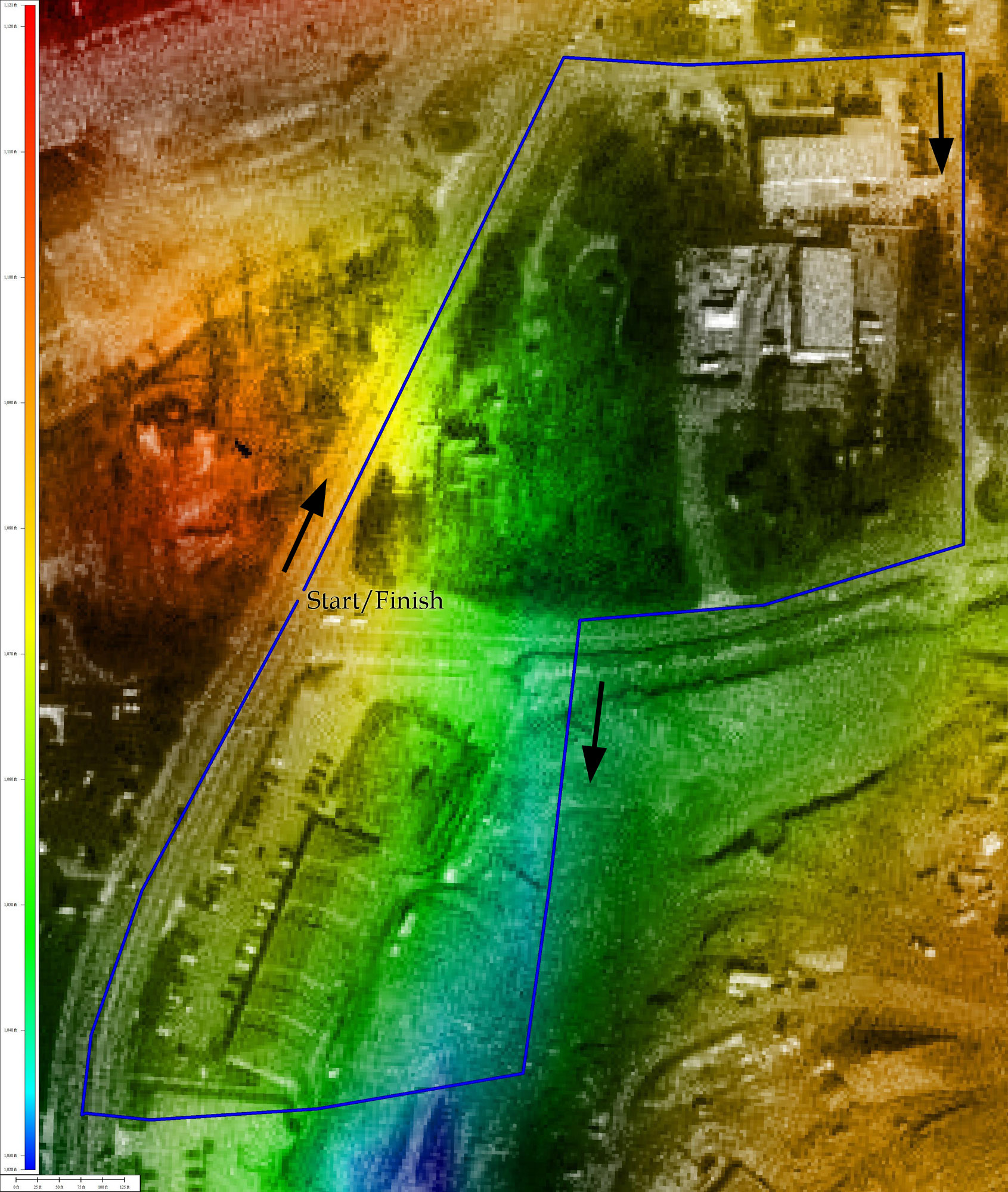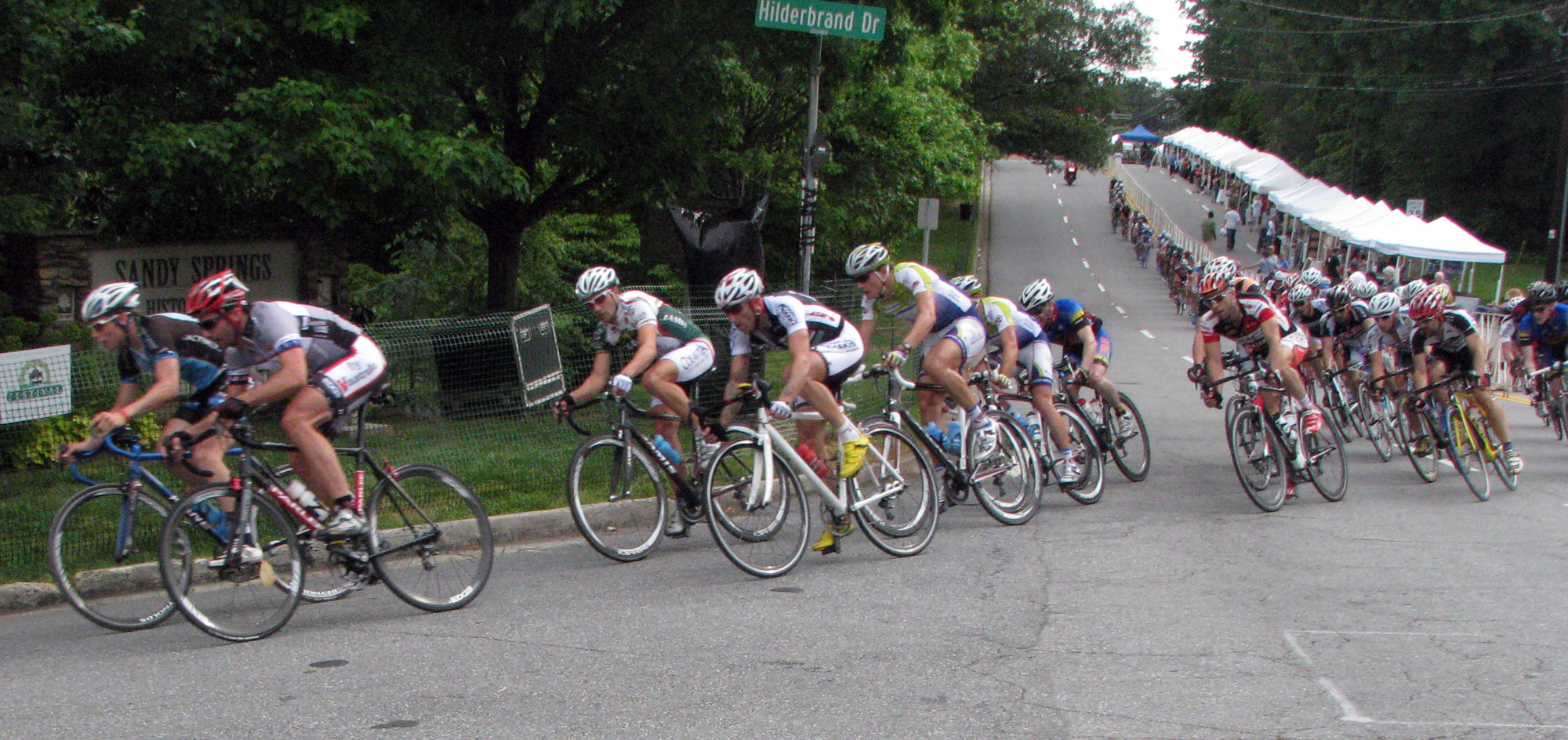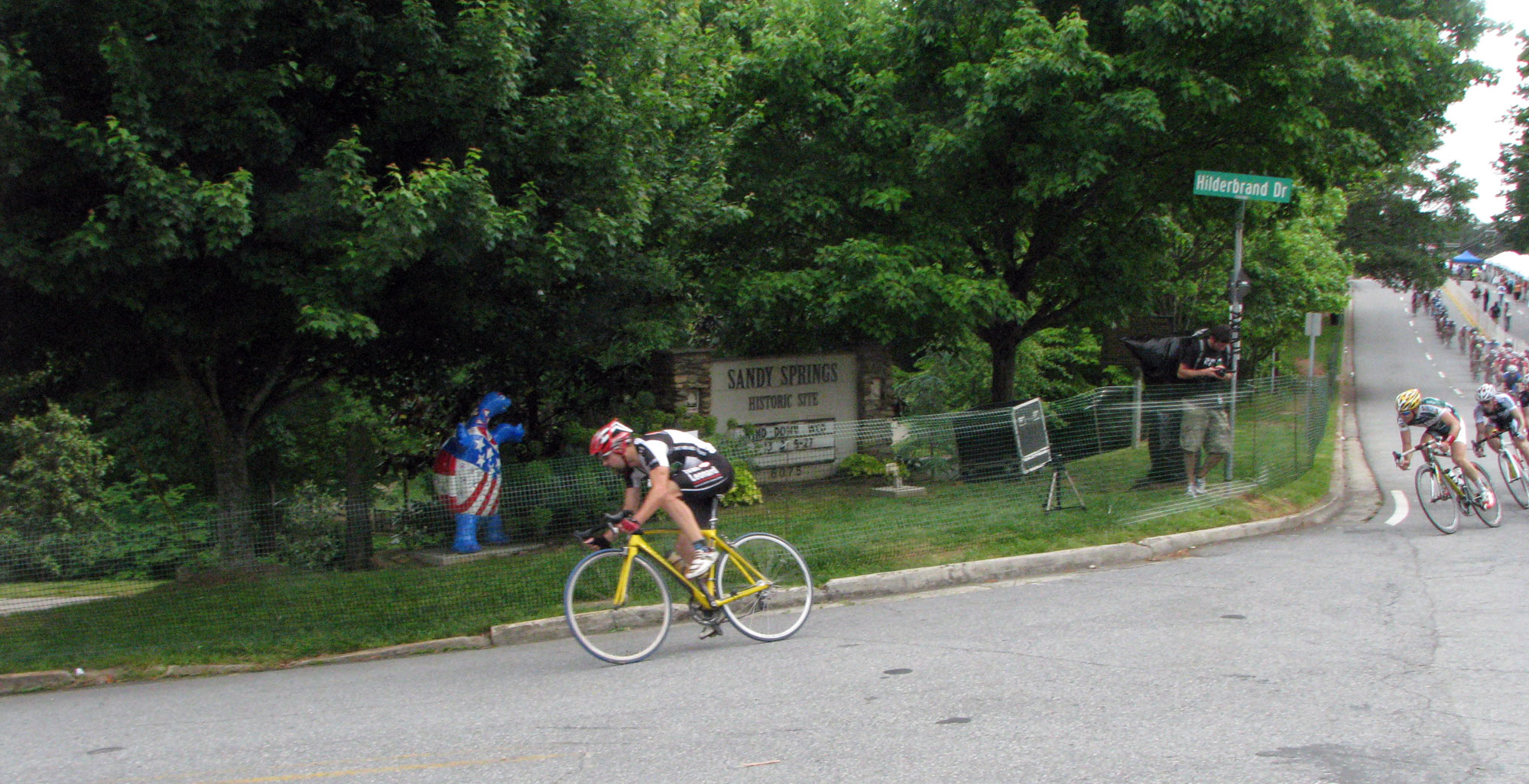What an exciting finale to the USA Crits Speedweek series! This was the first year that I was able to race the Sandy Springs crit, and I really like the course which is very hilly. Here is a topocreator map and elevation profile I made using the beta version of topocreator.com (coming very soon!!!). The satellite imagery is a little bit old, but the topography hasn’t changed much as you can see the “colorful” nature of the course where different colors represent different elevations.

The top 25 riders in the week-long series were called up first while the rest of the 100 strong field waited behind the barriers. Once the callups finished, the first row of riders took care of pushing the barriers out of the way in what I am starting to call the “pre-race scrum” where everybody races to the starting line to try to get as close to the front as possible. The reason why this is such an intense battle even before the start of the race is because of the “whip-lash effect” and the “roller-coaster effect” that corners and hills have on a very large peloton. My wife, Kristine, took an excellent picture that visually illustrates the “roller-coaster” effect. I’ve included it below:

Notice how the end of the group strung out after coming over the top of the hill whereas the front of the group has already started to bunch up in uphill Turn #1. What happens with the “roller-coaster effect” is that after the riders at the very front of the group crest the top of a hill, they start to accelerate very quickly on the downhill. Meanwhile, the riders at the back of the group are still on the climb — but because drafting is so important in cycling it is very important that no gaps open up between you and the rider in front of you. Therefore the riders at the back of the group need to be going at nearly the same speed as the riders at the front of the group. Because the riders at the front of the group are going fast down the hill, this means that the riders at the back of the group need to be going that same speed up the hill! Then the reverse process applies the next time you come to an uphill. The riders at the back are going faster than the riders at the front — so you have to either slam on your brakes to prevent running into the person in front of you — or you have to look for a hole to let your momentum carry you past as many riders as possible.
The “whip-lash effect” occurs coming out of corners. Again, the riders at the front are already accelerating out of the corner while the riders at the back are still braking for the corner. This means that riders at the back have to find some way to either take the corner as fast as the riders at the front or expend extra energy to accelerate up to top speed more quickly coming out of the corner.
This course with its six corners and large start/finish hill exhibited both trends and one other that I am calling the “magic disappearing rider corner”. This is an interesting phenomena that happens sometimes on downhill corners. This is where you appear to enter a corner at a higher speed than the rider in front of you, but because of the downhill nature of the corner, the rider in front of you is actually accelerating and will “disappear” from you causing a gap to open if you don’t accelerate at a speed that looks like is going to cause you to ram into the back of them as you enter the corner. This course had a disappearing corner at the lefthand Turn #4. I noticed this after the first few laps and then settled in comfortably to the corner knowing that I could start accelerating as I entered the corner without fear of hitting the rider in front of me — instead of waiting until after the corner. This saves some energy by reducing the amount of acceleration needed after the corner.
I had an OK starting position about mid-pack and then gradually worked my way over the first half of the race to the front of the group. A break of 8 riders with all teams represented got away within the first few laps of the race when I was nowhere near the front. By the time I made it anywhere close to the front, their gap was already up to 30 seconds. Still, I worked diligently to pass riders as often as I could — mainly on the Start/Finish hill and in Turn 1 on the outside. Everywhere else on the course was a battle just to hold your position. I would tend to get passed by a rider or two on Turn #2 if the inside track ended up being faster. Once I finally made it to the front, I fought hard to stay there. With about 10 laps to go Frank Travieso put in a hard attack through the Start/Finish line. A couple seconds later a hole opened up on the left and so I attacked as hard as I could and made it about halfway across, but saw that my gap to the hard charging peloton was only 2 or 3 seconds so I sat up and was swallowed pretty bad — maybe back down to 30th or so in the field? By this point the pace in the field was fast enough that it looked like we were going to bring back the break — but unfortunately the break of 8 just barely survived. I moved up a few spots by the final lap and then passed two or three people on the finishing sprint to finish 29th in the race.

Leave a Reply